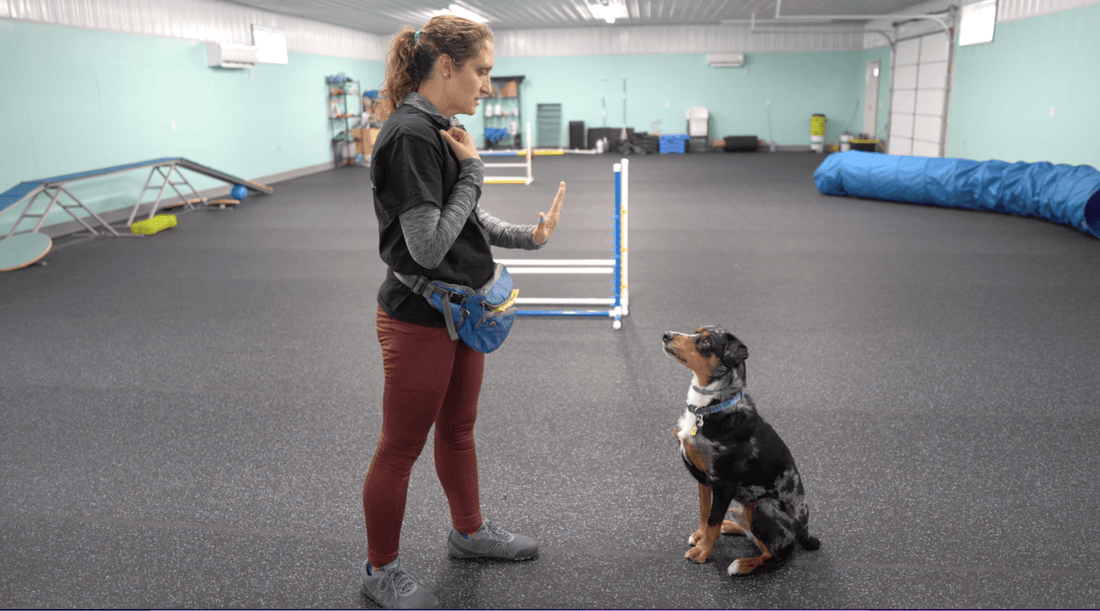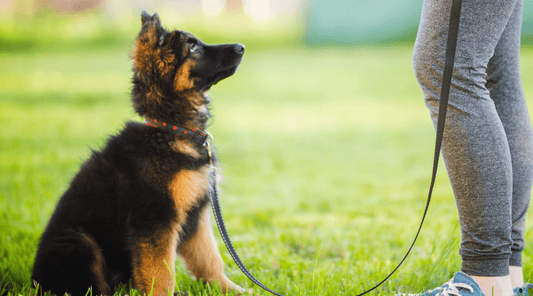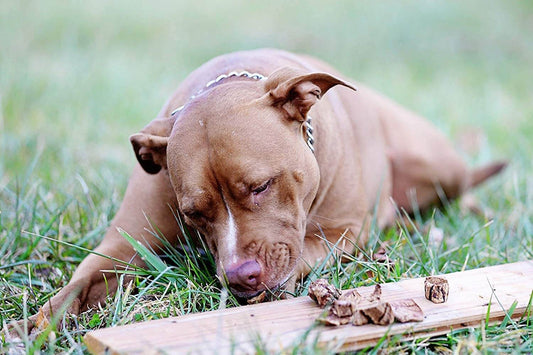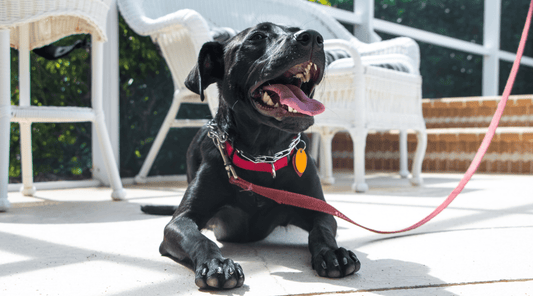
Dog Training Hand Signals: Learn to Speak Dog with Your Hands
Dawn Miller Apr 02, 20255 Minute ReadDog training hand signals reinforce commands and make training faster and easier. They allow me to communicate at a distance without yelling.
Just the other day, I was at the neighborhood greenspace when something funny happened.
I told Pixie to “sit” out loud—just as an industrial leaf blower fired up two yards over. She didn’t hear me. But she did see my hand motion, and her little terrier bottom hit the grass like a pro.
It's true that dogs have sensitive ears and can hear things we can't. But that doesn't mean they can listen to my little voice over loud distractions like lawnmowers and chainsaws after a storm. Dog hand signals really come in handy.
Why Use Dog Training Hand Signals?
Hand signals are a natural way to communicate with a dog. Even when we're not aware of our body language, dogs are trying to read it. They're looking to us for guidance. And we can seem very confusing if we don't use hand signals consistently.
What's more...
- Dogs learn visual cues faster than verbal commands
- Visual reinforce commands, giving a dog multiple "data-points" to learn from
- Great for training (or using commands) in noisy environments like parades, field concerts, and the day everyone in the neighborhood decides it's time to cut the lawn all at once
- Help older dogs who might lose hearing stay connected, which can also reduce dementia progression rate and the problems that can come with that.
- Add clarity and consistency to verbal cues. If they confuse Go to Crate and Go Potty, a dog hand gesture gives much-needed clarification.
- Great backup when you forget the words mid-command (guilty!)
- Human neighbors, family, and friends who sign can communicate with your dog—which is a bonus.
Once you teach a dog a verbal command with a hand signal, you can do either and get the same result—a sitting Pixie.
Some hand commands like sit, come, and stay are relatively universal. Others you can come up with yourself. Just be consistent with your dog and don't make the gestures too similar.
Watch Amanda use jazz hands to communicate that training is finished:
If you have a dog like Pixie, who is still rolling over for treats even after training is over, a hand signal like this can communicate the session is done and they can find something else to do—like chew on a meaty dog bone.
What You’ll Need to Get Started
- High-value dog treats (Pixie votes for beef lung bites—Bruno seconds that.)
- A quiet space to practice
- Patience, praise, and positivity.
- A little time each day (5-10 minutes)
Pro Tip: Always end with a win! If they're struggling to learn a command in 5 minutes, go back to something they can do easily. Reward them. Then end the session. This generates a positive final memory that has them looking forward—not dreading—training.
This trick worked with my kids, when they were little, too, by the way.
How to Teach a Dog to Sit (With a Hand Signal)
This classic is usually the first hand signal we teach.
Hand Signal:
Hold your hand, palm up, and raise it from your side to your shoulder in a slight scoop motion. Think of drawing a backward "C" from your dog’s nose upward.
Steps:
- Hold a treat by your dog’s nose.
- Slowly move the treat upward toward your shoulder.
- As their nose follows the treat, their bottom should naturally go down into a sit.
- The moment they sit, say “sit,” show the hand signal, and reward with a high-value dog treat. I use single-ingredient roasted beef lung treats.
- Repeat several times. Once they start to anticipate the sit from the motion, practice using just the hand signal.
How to Teach a Dog to Stay (The Hand Signal Version)
I like to keep this command in my back pocket for when Pixie wants to chase the squirrel across the street. "Stay" is vital. It helps you keep your dog safe. And with a hand signal, you can communicate, even across a busy street.
Hand Signal:
Hold your palm flat like a stop sign and face it toward your dog. This signal is large and clear, so that they can see it, even at a distance.
Steps:
- Start with your dog in a sit or down position.
- Say “stay” while showing the hand signal.
- Take one step back.
- If they stay put, reward them with a dog treat and praise.
- If they move, gently guide them back and try again.
- Gradually increase the distance and duration.
- When you're confident they understand, visit noisy, distracting places and practice there, too. You never know when this superpower might keep your pup from walking into danger.
How to Train a Dog to Come When Called (With a Hand Signal)
A solid recall command can save you lots of frustration. No more chasing your dog around when it's time to leash up at the dog park or wondering if they'll ever come back when you off-leash them at the hiking trail.
Even if you never let your dog out, dogs can get out accidentally during a move or furniture delivery. It's helpful when a dog comes when you call, no matter what.
Hand Signal:
Stretch your arm straight out to the side, then bring it in toward your chest—like you’re motioning “come here.”
Steps:
- With your dog a few feet away, say “come” and use the hand motion.
- When they head toward you, cheer them on!
- As soon as they get to you, reward them with dog treats, praise, or a quick game.
- Start close and gradually increase the distance.
The key here is to make “come” the most exciting thing ever. I still celebrate like Pixie won a gold medal every time she nails it.
Use Treats to Build Reliability; Then Mix It Up
In the early stages of dog training, a high-value treat is a game-changer. These treats have an irresistible aroma (if you're a dog) and a taste to match. As a dog mom, I also want treats that promote dog health, enhancing nutrition with essentials like protein, collagen protein, healthy fats, vitamins & minerals.
Pixie will do back flips for beef lung training treats. It has to feel rewarding, so none of that trying to trick them into thinking a kibble is a treat. They see through your lies!
Instead, you want them to think, “Wow, when I see that hand signal and do 'the thing', I hit the jackpot!”
Once they’ve mastered the commands? Start mixing in:
- Verbal praise
- Toys or playtime
- Access to things they love (like going outside, hopping on the couch, dog bones session)
In fact, positive reinforcement training is most effective when they only get treats sometimes.
Want to Learn More?
If finding out that your dog can learn dog sign language inspired you to do more dog training (and maybe finally teach your dog to stop running away when it's time to go to the vet), join us in the 7-Day Dog Training Challenge!
- Easy-to-follow videos
- Expert tips from professionals
- Your dog earns certificates for each command they learn
- Essential commands that make life easier
- Training games your dog will love
Available On:


Disclosure: This article may contain affiliate links, which means we may earn a small commission if you make a purchase through these links—at no extra cost to you. We only recommend products we trust and believe will benefit you and your K9.



